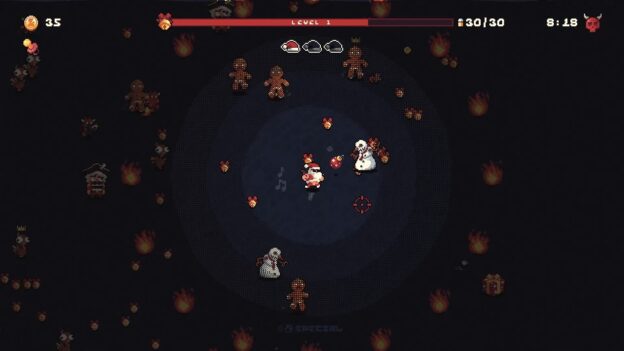Session: Skate Sim Review – Review

Session: Skate Sim brings the realistic skating simulation to handheld, but should it have?
Since the release of Skate and its subsequent sequels back in 2007, three competing games (Skater XL, Session Skate Sim, and TRUE SKATE) have dominated that specific type of realistic skateboarding game. Direct competition in this small market has led to a real divide amongst the fans, and a gold rush towards the Nintendo Switch. Now we have a first entry with Session:Skate Sim, but how does it bode for this genre coming to handheld? The answer is a resounding bad.
Within Session and similarly, the skate sim genre as a whole, the controls are based on each stick representing a leg of your character. To perform an Ollie (jump), you need to pull the left stick back, then when letting go, push the right stick forward creating a jumping motion. This is similar when performing flip tricks. Setting up the timing with the stick inputs can create a litany of moves and combos. Using these inputs when landing on an object also initiates a grind or slide depending on your positioning. Turning is on the trigger buttons and pushing is on the face buttons.

Manuals (wheelies) are initiated by moving the front foot stick forward or backward, but not all the way. This creates that balancing act of maintaining the manual or nose manual. Flipping in and out of manuals becomes the ultimate challenge. Grabs aren’t currently implemented but are promised for a future update. These kinds of games tend to be an ongoing work in progress so that’s to be expected. At least in Session you can get off your board and walk, which is a leg up to its competitors.
Skate sim controls generally have a steep learning curve with plenty of frustrations and a deep tutorial system. Luckily, I have hundreds of hours into each of these sims on PC, so I was fully prepared for a long ride into a handheld version of Session. Unfortunately, the Nintendo Switch Joy-Con analog sticks aren’t made to have the kind of throw necessary to make for accurate movements. The Pro Controller adds some much needed improvement to the control, but when in handheld mode, manuals are very frustrating. The pop and flick system also comes with a hard delay, adding to an already difficult timing-based trick system.

The game does come with a fully featured story campaign that has your created character returning from retirement to get back to pro level status. You do so by taking trick quests from fellow pros and competing in contests. The pros are interesting and the trick requests rarely feel repeated. The quests themselves register in very awkward ways. Performing said tricks will often prod the quest to proceed but so will failures. Reaching the goal of the quest is a crapshoot, but not enough to hinder progress. They just trigger in a half baked way that’s inconsistent.
The three maps (New York, Philadelphia, and San Francisco) are massive. Each feels handcrafted with hundreds of skate spots, including a lot of real world locales for extra accuracy. The way Session is developed, everything is grindable so the possibilities for tricks are endless. Also, since you have the capability to get off your board and walk, exploration is encouraged. Outside of the gameplay, Session boasts an intricate replay editor that gives you the capability to film your tricks with follow cams, fish eye lenses, filters, and even with slow-mo. With these fantastic tools you can film and save a full skate part in game (and many have, check YouTube.) It’s as deep and robust as you want it to be. A fully featured stat menu is available to adjust your gameplay to whatever level you like. You can turn on moon gravity or just up your flip speed ever so slightly. Tweaking your settings to find the perfect sweet spot for your style is part of the fun, allowing for infinite customization. My gameplay may look completely different than someone else’s and that makes for a unique experience.

Regrettably, no amount of depth or complexity can really make up for how bad this port looks. It’s like someone smeared vaseline on the camera. Textures are blurry and pop-in is almost non stop. Details are essentially gone to a fully pixelated hard-to-see mess. A consistent halo is eternally around my character’s frame so it blocks out the background, but also flickers with the right lighting. What’s really comedic is when speaking to the pro skaters in the game. They are represented with crystal-clear well-detailed character portraits on top of the blurry gameplay. It’s a rough translation from PC to Switch. The step down in quality outweighs any portability possibility, and that includes the poor timing window for tricks. It has too many cons that I would ever suggest playing this on Switch.
Session: Skate Sim is an exciting premise on its face. The skate sim genre is up and coming, with new entries promised like Skate 4. The trouble comes when you think about how much is going on in the background. Physics adjustments on the fly, animation adjustments, and massive maps. In an attempt to include this fully featured PC game on the Switch there had to be concessions and we see that in both visuals and how it plays. It’s a miracle that the game runs at all, but just because you can port it, doesn’t mean you should.




